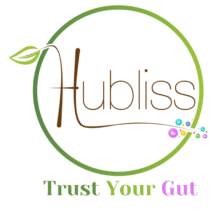Please be advised that this article is only meant to provide general information about our digestive system, gut bacteria and probiotics. None of this is meant to be a specific recommendation for certain diseases, dysfunctions or symptoms you might be experiencing. Proper supplementation of pre or probiotics should be discussed with a nutrition health professional, naturopath or even medical professional. If you have any questions about any of this information, please contact Hubliss nutrition. We can help!
Every Microbe's Workin' for the weekend
Let’s start with a quick run through on what the human digestive system is in a nutshell: Digestion facilitates proper absorption of nutrients from food and supplements and allows evacuation of undigested molecules and toxins from the body. Gut health therefore greatly impacts our immunity working with our detoxification (Lymphatic) system and has a considerable impact on our general health, mental states and brain function.
Although many actions are performed by organs such as the stomach, intestines, liver and gallbladder, the majority of work is done by the microbes that live in our gut, known as the gut microbiome. This includes microbes that are both beneficial and potentially harmful.
They stick with us like....well...bacteria
The population of microbes in our gut first develops as newborns when consuming mother’s milk or formula from the bottle. In fact, some bacteria is even passed to us while still in the womb. Once we are born we are exposed to microbes in the air around us, from contact with other people’s skin such as the mother’s nipple, from touching surfaces and sucking on fingers or toes. In this way the entire mucous membrane of the digestive tract is colonized with microbes from our environment.
By the time we reach adulthood, there are trillions of bacteria in our microbiome, with about 400-500 different strains or types. Some of these bacteria attach to the lining in the small and large intestines and help fend off parasites from settling onto the digestive tract. The microbiome, also known as the gut flora or microflora, is developed throughout the process of growing up and plays an important role in our body’s ability to fight diseases, as front-line workers in our immune defense. The population of gut bacteria includes both beneficial and potentially harmful microbes, which manufacture substances that either raise or lower our risk of disease, therefore determining the overall impact of drugs in our system , and influencing metabolic health and aging. Our gut flora also produces specific vitamins such as most of B group vitamins such as folic acid (B9), as well as vitamin K.
However, as we age, the number and diversity of our gut microbes tends to decrease. This can be perpetuated by eating an unhealthy diet, living with constant high stress, and the use of antibiotics and prescription medications. Given this characterizes most of the human population in one way or another, you can imagine that many of us have sub-optimal digestion, resulting in lowered cognitive and immune functions.
Balance is Key

“Lactobacillus and Bifidobacteria, exist in our gut to help keep the harmful bacteria under control to maintain the balance of ‘good’ and ‘bad’ microbes. If the damaging bacteria increase in number, the favorable bacteria decrease in number. Bad bacteria strains such as Eschericcia Coli (E.Coli), are typically present in a healthy microflora , but only cause illness when the microbiome is not properly balanced with sufficient probiotics.”
What the heck do you do all day, anyways?!
Probiotic bacteria refers to the beneficial, or “good” gut bacteria and can be restored by the food we eat, and supplementation. There are 2 major strains of probiotics we can consume through supplements or food: Lactobacillus and/or Bifidobacteria. These 2 major bacteria strains exist in our gut to help keep the proper balance of good and bad microbes, as they keep the bad bacteria under control. If the damaging bacteria increase in number, the favorable bacteria decrease in number. “Bad” bacteria strains such as Eschericcia Coli (E.Coli), are typically present in a healthy microflora , but only cause illness when the microbiome is not properly balanced with sufficient probiotics.
WHat kind of foods benefit the microbiome?
There are numerous foods and drinks to consume that can increase the number of probiotics in the gut, all of which have fermented elements to them. Fermentation of anything creates bacteria, and in some cases molds, but if made properly these foods and drinks will consist of probiotics that help repopulate and rebalance the microbiome.
Here are some foods to consider in general:
- Yogurt
- Cottage cheese, kefir
- Sauerkraut
- Pickles
- Miso, tofu, tempeh
- Sourdough bread
- Kombucha

It is important to keep in mind that if purchasing fermented foods and drinks, they should be labelled as “raw” or “ unpasteurized” to ensure the probiotics are live and active. Inactive probiotics will not repopulate the gut. I always suggest to look for organic or locally made products as well, to ensure good quality.
What we Know:
Good Bacteria is able to:
- Assist in the digestion of lactose and the breakdown of proteins into a digestible form called Amino Acids.
- Help protect against the development of allergic reactions
- Increase the amount of immune system cells
- Manufacturing Essential Fatty Acids
- Balancing the pH levels (acidity levels) in our intestines
- Break down and rebuild hormones
- Promote healthy metabolism, which is the body’s ability to process certain elements such as nutrients we consume, processing our sugar intake, hormone balancing and calorie burning
- keep bad bacteria in check
More recently, it’s been discovered that the presence of Prebiotics can help facilitate a good presence of healthy probiotics in the digestive system. This garner’s it’s own write-up in itself, and will be something that is covered in a future article. Stay tuned!!

